[Before reading this post, you might like to look at Feeling Crap: A Brief Introduction to Your Suffering Mind, as well as Feeling Crap 2: The Three Layers of Your Suffering Mind.]
HOW DO WE FREE OURSELVES FROM FEELING CRAP?
That’s the million dollar question isn’t it.
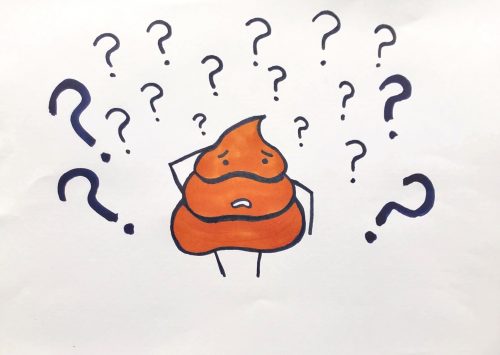
The Suffering Mind wants none of this crap, this very human-suffering-crap – for no other creature on this planet suffers in the way that we do. None of them possessing the language with which to suffer: words, concepts, abstract symbols that can make thoughts and feelings and text-messages as mind-breakingly real at times as sticks and stones.
My dog Max experiences the pain of existence in exactly the same way that I do: the pain of physical and emotional injury, the pain of social abandonment and exclusion, of not getting what he wants. Max experiences “reality slaps” like this on a daily, even hourly basis (as do I). But he doesn’t suffer them in the way that you and I do. Not one bit.

Max will never write a blogpost or create a piece of technology called a laptop on which to write it. Nor will he, or any other member of his species invent something like the internet to disseminate these words to other sentient, language-producing creatures.
Us homo sapiens have immeasurably benefitted from language, but consider for a moment the price we’ve had to pay in allowing language to be the primary currency of all our mental processes. Because that’s how, for the most part, we communicate both inside ourselves as well as externally with other human beings. Think of the ways in which language produces joy and pleasure but also immeasurable suffering for each and every one of us on a daily basis, and for our human species as a whole.
ALLEVIATING SUFFERING & ENHANCING WELL-BEING
If everything your language-focused mind has been trying to do so far hasn’t really helped, or helped in only a small way, maybe it’s time to look at some other options?
If you’re frequently locked in the struggle I’ve described above with your pleasure-seeking, pain-avoiding, problem-solving mind, maybe you need a more RADICAL solution: one that still uses language (our primary currency, we can’t avoid it), but is also opens us up to other channels of processing?
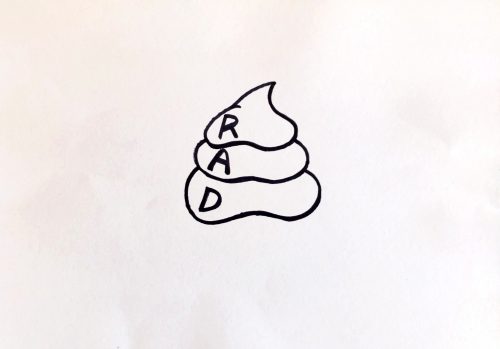
What we perhaps need is a solution that targets those three crappy layers, but not necessarily in the default Jim’ll Fix It ways of this thinking/languaging lump of human meat we call “the brain”.
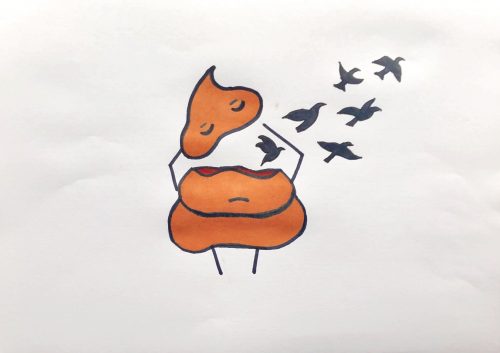
If the Blinkered Mind is programmed to say GO AWAY to pain, as well as becoming at times overwhelmingly FUSED with it, then one thing we can maybe start to do is introduce some Receptive Mind strategies into the mix.
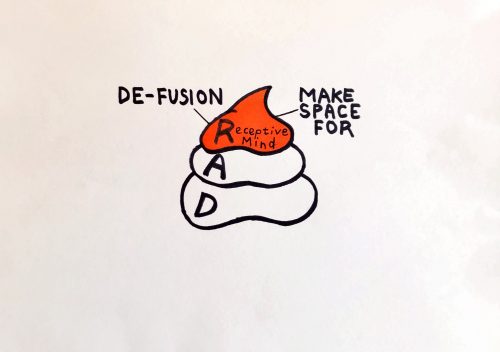
In this layer, we might need some DEFUSION processes to help us when we’re “stuck” in a particularly strong reaction (mental or physical) to a painful event.
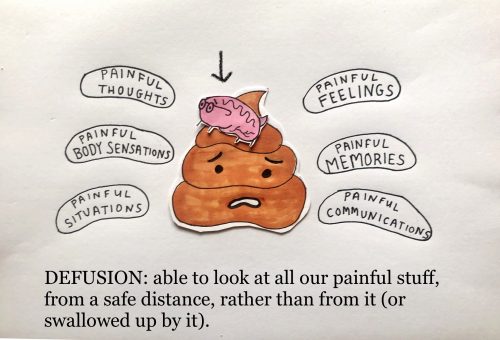
We might also start practicing MAKING SPACE FOR for difficult thoughts and feelings.
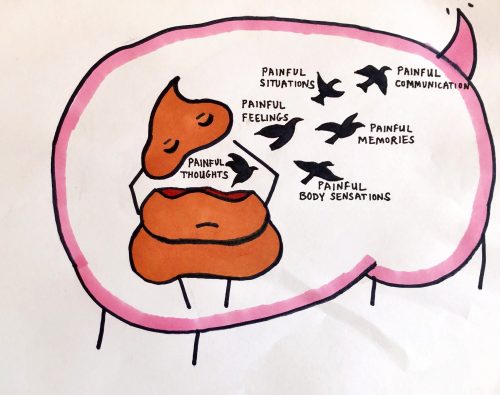
MAKING SPACE FOR practices are an alternative to allowing the mind to do what it does best and by default: pushing painful stuff away, or wrestling interminably with it in the hope that it can be solved like a maths problem. This might help us to free ourselves up to focus on more meaningful actions and activities instead.
Part of this might also involve cultivating the second layer of RADness: Aware Mind.
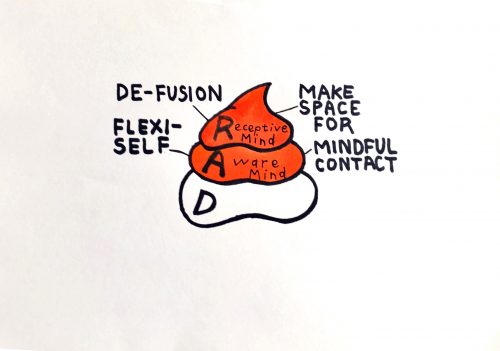
One aspect of Aware Mind is the development of a more FLEXI-SELF approach to life’s challenges: practising ways of seeing things from different, and hopefully more helpful angles. Also: not getting into arguments or disagreeing with what our minds tell us about the world and ourselves.
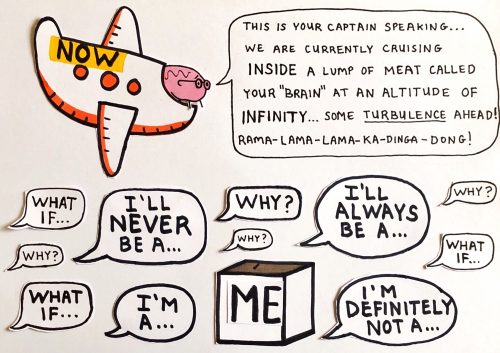
To help us do this, we might need to “drop anchor” again and again in order to bring our minds back in MINDFUL CONTACT with what’s actually going on right here and now, as opposed to the what’s happening inside our language-filled heads.
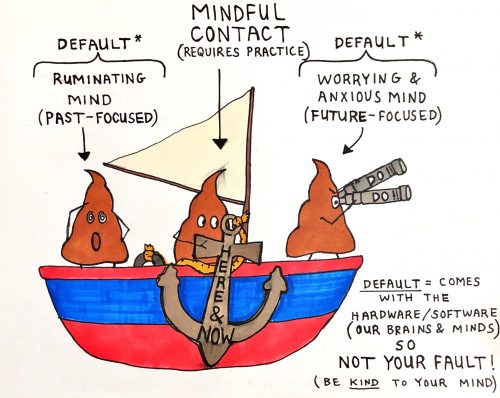
Also, let’s clarify your core values and begin some devoted, committed action: a few small steps, towards some meaningful goals in your life.
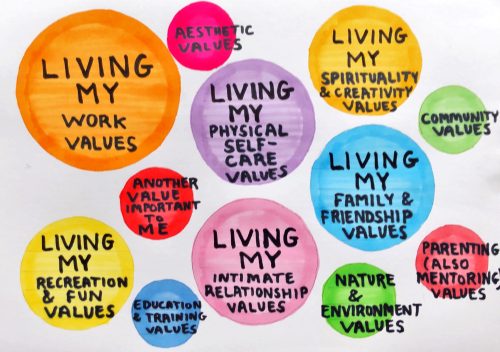
Each of the drawings in this post took me varying amounts of time to create, from a few minutes to a number of hours, and many weeks of writing and fiddling around with words and images to put it all together. The process was at times frustrating and disheartening when things didn’t go according to plan, but in the end I got this crappy little article out of it – a crappy little article which is meaningful to me, and hopefully for you too?
I’ve deliberately used a somewhat “spiritual” word here for the third RAD layer: Devoted Mind. Not because the valued actions need to be religious or spiritual per se.
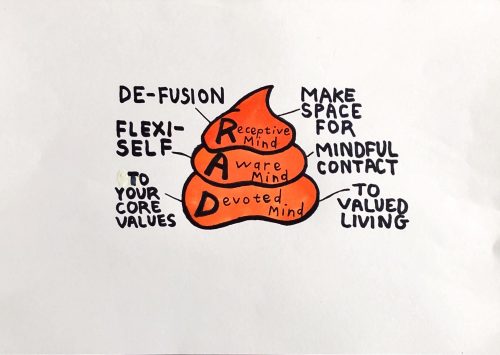
You can be devoted to your family, or to a creative pursuit, or a football team. I’m devoted to my dog Max, and to my therapy practice, also to learning poems I love, like this one, off by heart (preferably on a walk or a hike). But I don’t have any expectation that you could or should become devoted to dogs or poetry or hiking, unless these are aligned with your core values!
We need to work out what you want to be devoted to, as well as how you’re going to show (through your actions) your devotion. It does seem though that choosing something important in our lives “to set apart by a vow” (the origins of the word “devoted”) is almost essential when it comes to living life the fullest.
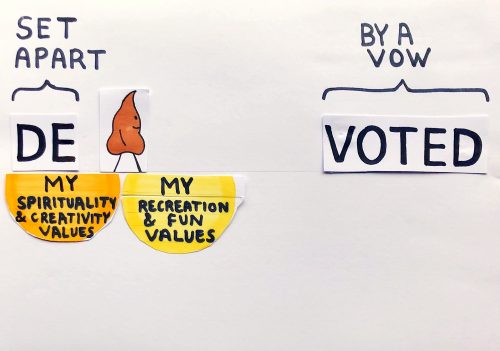
You get to choose however what you want this to be and how you can turn that into something meaningful that you can then dedicate time and energy towards.
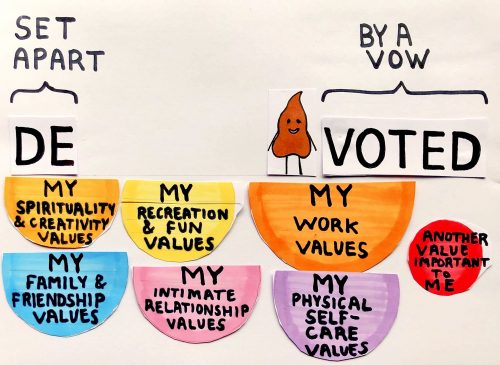
So are you ready to take back control of your super-helpful, often over-helpful, problem-solving, pain avoiding (crappy) brain and get back to living your life to the fullest?
If you are, let’s talk some more about this RAD crap and see how I can help you to get a bit closer to some of the peace and contentment you seek, that we all seek, as well as a life that is valued and meaningful to you in the long run.
**
If you’d like to arrange an initial consultation session to talk more about whatever it is you’re struggling with at the moment, we can organise that via email or telephone (07804197605).
Also please feel free to drop me a line if you have any other questions regarding the therapy I offer. I look forward to hearing from you.

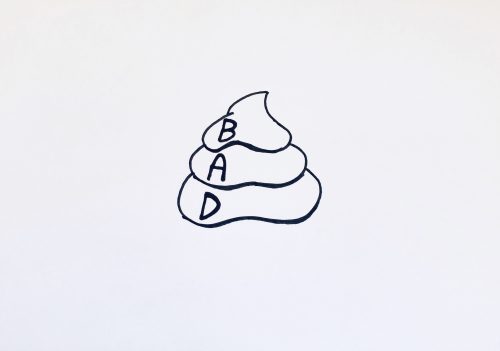
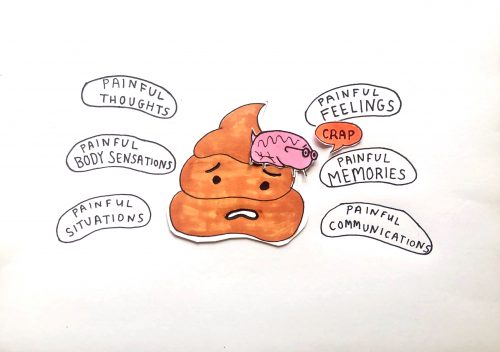
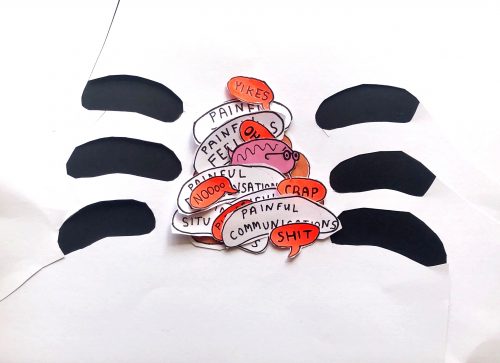
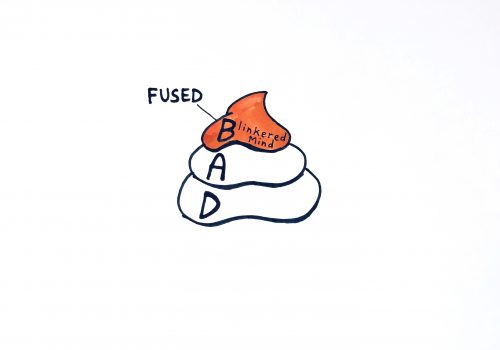 Also, because pain in any shape or form is so uh painful, our suffering Blinkered Minds will often try to avoid this pain in a very intuitive way.
Also, because pain in any shape or form is so uh painful, our suffering Blinkered Minds will often try to avoid this pain in a very intuitive way.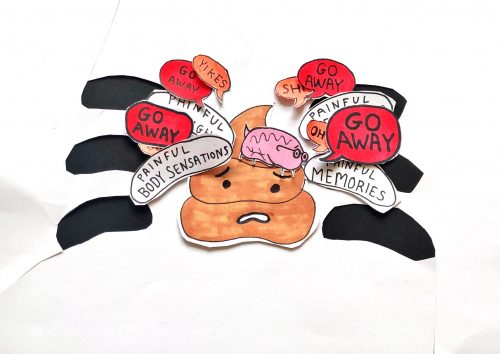
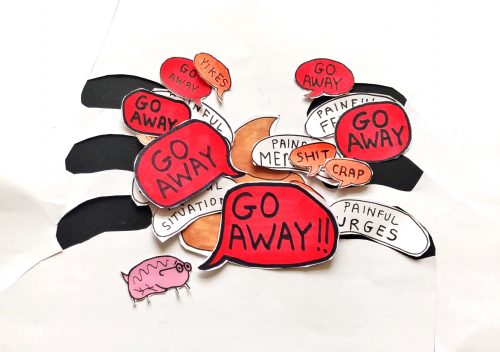
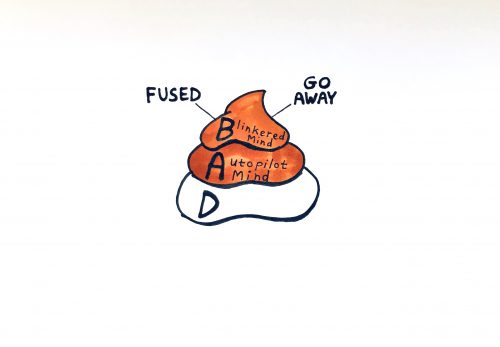
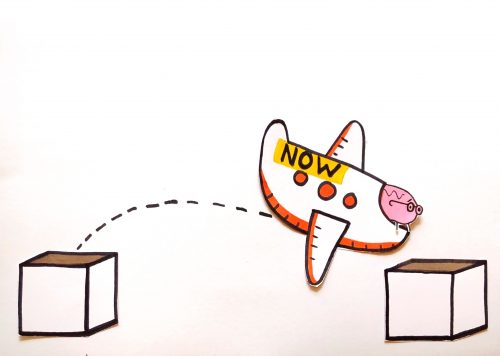
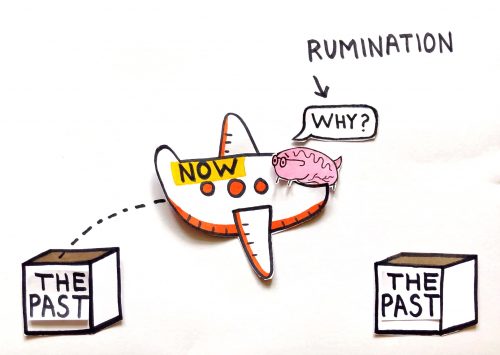
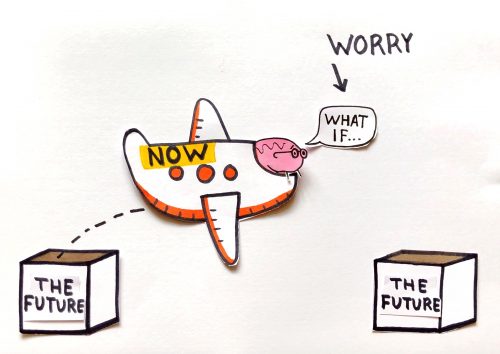
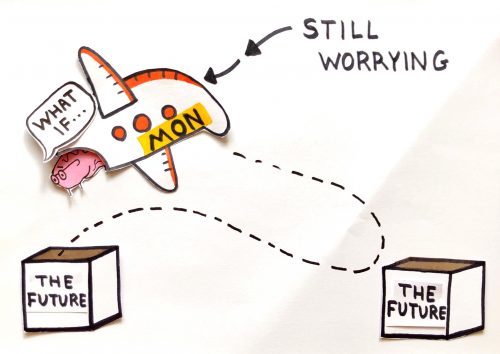
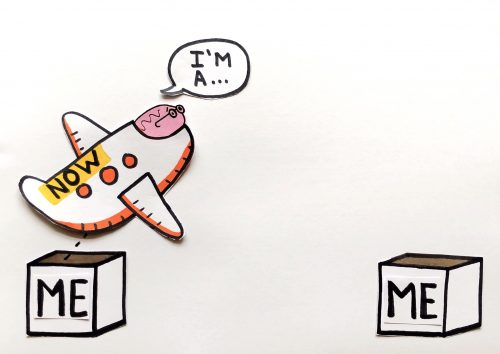
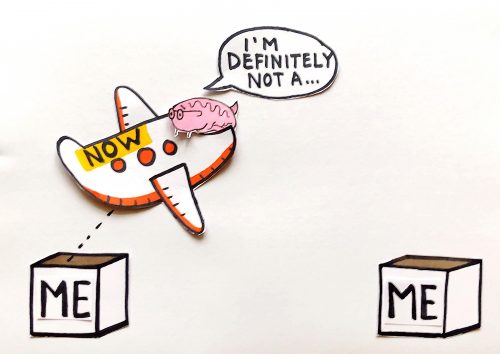
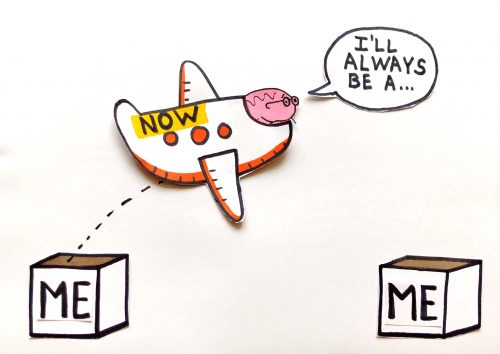
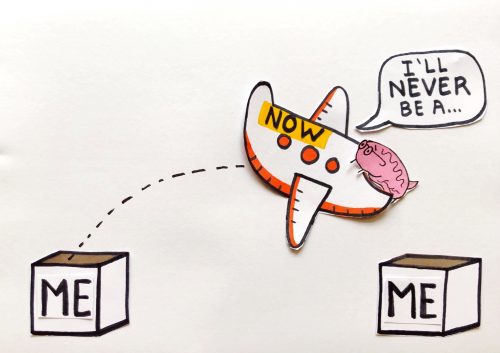
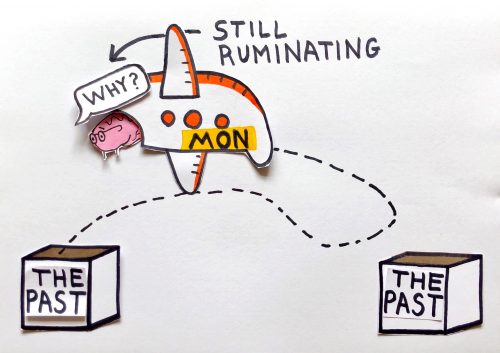
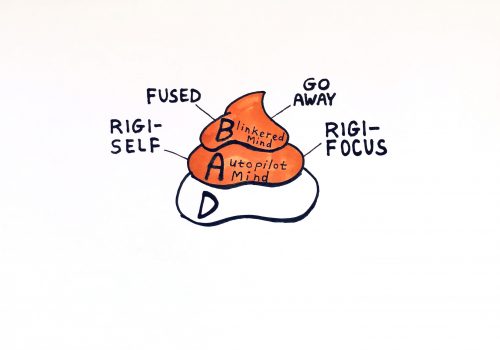
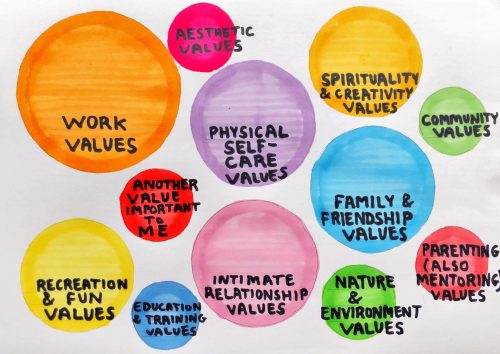
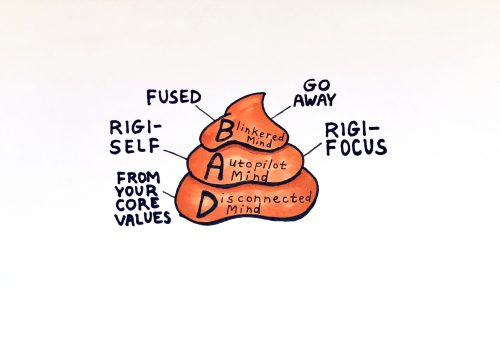
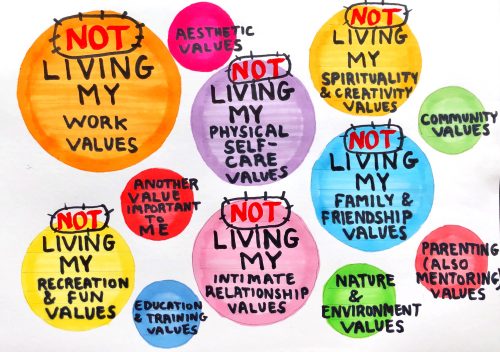
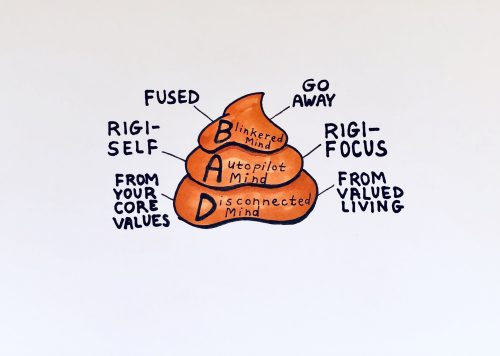

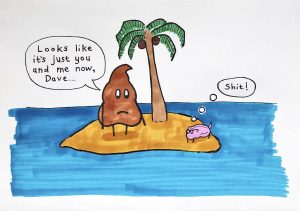
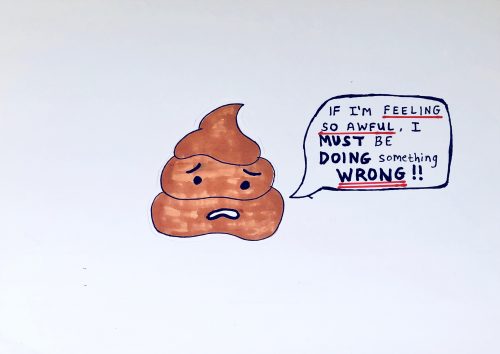
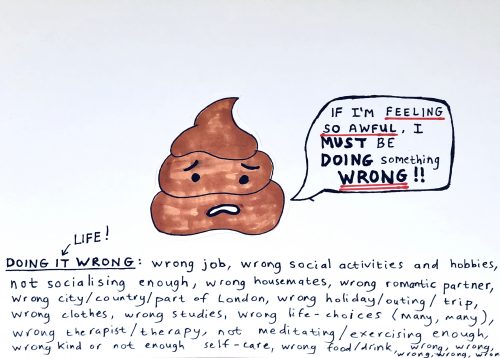
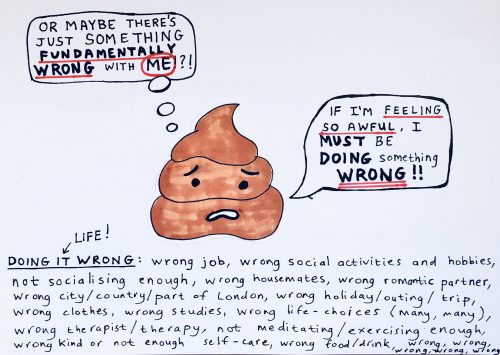
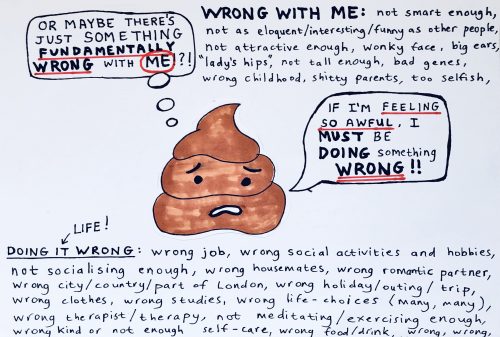



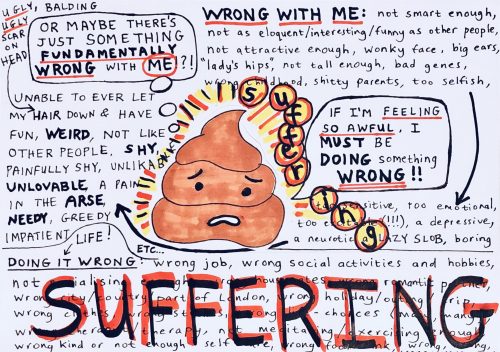
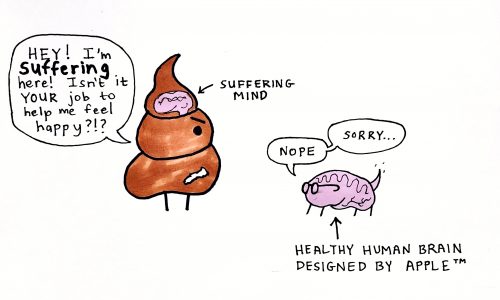 He’s right though.
He’s right though.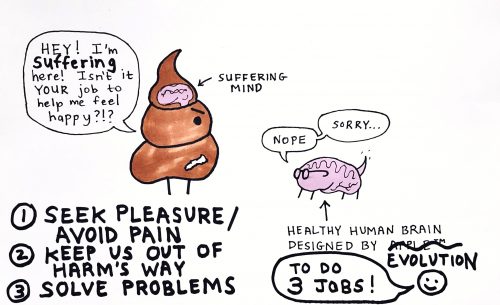
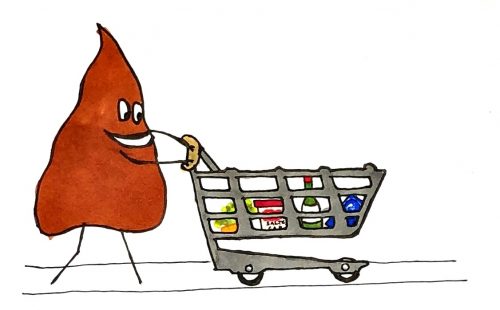 I’m also relieved to have seen and avoided my neighbour – the one I had an argument with with last week who I spotted walking down another aisle. Whew, and another dopamine hit of pleasure!
I’m also relieved to have seen and avoided my neighbour – the one I had an argument with with last week who I spotted walking down another aisle. Whew, and another dopamine hit of pleasure!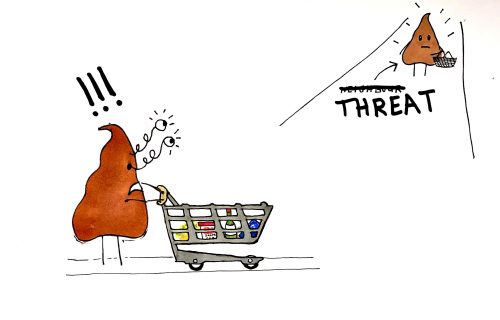 But maybe that evening I eat the whole tub of Hagen Daz as I am wont to do and drink most of the wine and feel sick and full of self-loathing.
But maybe that evening I eat the whole tub of Hagen Daz as I am wont to do and drink most of the wine and feel sick and full of self-loathing.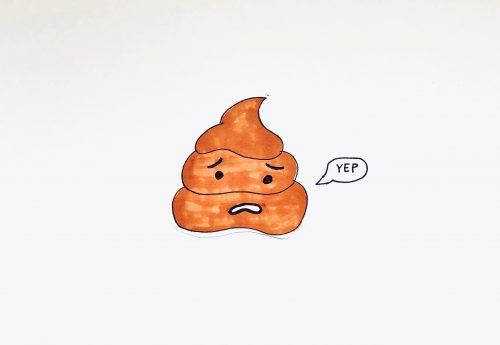
 One of the best ways to cultivate gratitude is to establish a daily practice in which you remind yourself of the gifts, grace, benefits, and good things you enjoy. One of the best ways to do this is keeping a daily journal in which you record the blessings you are grateful for. Emmons’ extensive research has shown that this technique makes people happier. When we are grateful, we affirm that a source of goodness exists in our lives. By writing each day, we magnify and expand upon these sources of goodness. Setting aside time on a daily basis to recall moments of gratitude associated with even mundane or ordinary events, your personal attributes, or valued people in your life gives you the potential to interweave and thread together a sus- tainable life theme of gratefulness, just as it nourishes a fundamental life stance whose thrust is decidedly affirming.
One of the best ways to cultivate gratitude is to establish a daily practice in which you remind yourself of the gifts, grace, benefits, and good things you enjoy. One of the best ways to do this is keeping a daily journal in which you record the blessings you are grateful for. Emmons’ extensive research has shown that this technique makes people happier. When we are grateful, we affirm that a source of goodness exists in our lives. By writing each day, we magnify and expand upon these sources of goodness. Setting aside time on a daily basis to recall moments of gratitude associated with even mundane or ordinary events, your personal attributes, or valued people in your life gives you the potential to interweave and thread together a sus- tainable life theme of gratefulness, just as it nourishes a fundamental life stance whose thrust is decidedly affirming.![[Photo by Michelle Robinson: Black Dog Visitation series]](http://stevewasserman.co.uk/wp-content/uploads/2015/11/19942697499_e750dbfbb3_z-1-300x225.jpg)
![[Photo by Guido Caprini]](http://stevewasserman.co.uk/wp-content/uploads/2015/11/14393075726_2bfef29951_z-300x170.jpg)
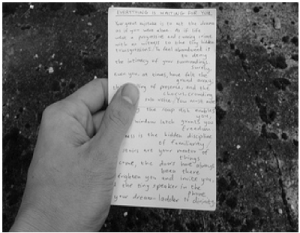 Surveys have revealed that people spend more time praying than doing just about anything else. 72 percent of people asked say that they pray at least once a day; 75 percent of people say they would like to spend more time in prayer, and over half (51 percent) say they pray before a meal. Most of the prayers are casually conversational rather than liturgically formal.
Surveys have revealed that people spend more time praying than doing just about anything else. 72 percent of people asked say that they pray at least once a day; 75 percent of people say they would like to spend more time in prayer, and over half (51 percent) say they pray before a meal. Most of the prayers are casually conversational rather than liturgically formal.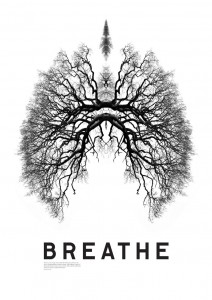 Good health; being alive; no more skin allergies; I’m not fat; white teeth; exercise; eyes; ears; touch; physical strength; afternoon nap; ability to breathe; modern medicine, energy to get through the day; no broken bones. Each of these bodily-related blessings appeared in journals that Emmons’ research participants have kept. The physicality of gratitude is noticeable as gratefulness for the functioning of one’s body, recovery from illness, or for just being alive are some of the most commonly mentioned themes. Nearly 80 percent of his research participants say they are grateful for their health, or the health of family members, making it the most cited trigger of gratitude. Another frequently mentioned source of gratitude is the senses – the ability to touch, see, smell, taste, and hear.
Good health; being alive; no more skin allergies; I’m not fat; white teeth; exercise; eyes; ears; touch; physical strength; afternoon nap; ability to breathe; modern medicine, energy to get through the day; no broken bones. Each of these bodily-related blessings appeared in journals that Emmons’ research participants have kept. The physicality of gratitude is noticeable as gratefulness for the functioning of one’s body, recovery from illness, or for just being alive are some of the most commonly mentioned themes. Nearly 80 percent of his research participants say they are grateful for their health, or the health of family members, making it the most cited trigger of gratitude. Another frequently mentioned source of gratitude is the senses – the ability to touch, see, smell, taste, and hear. Enter Emmons’ family home and one of the first things you will see is a ceramic plaque above the hallway mirror with the words GIVE THANKS carved in the center. Help yourself to a drink from the refrigerator and you might see a magnet on the door quoting Eleanor Roosevelt: “Yesterday is history, tomorrow is mystery … today is a gift.” Now go over to the family room and look at the bookcase to the right of the windows. On one shelf is a pewter paperweight given to him by a close friend containing a passage from the author Melody Beattie: “Gratitude can turn a meal into a feast, a house into a home, a stranger into a friend:’
Enter Emmons’ family home and one of the first things you will see is a ceramic plaque above the hallway mirror with the words GIVE THANKS carved in the center. Help yourself to a drink from the refrigerator and you might see a magnet on the door quoting Eleanor Roosevelt: “Yesterday is history, tomorrow is mystery … today is a gift.” Now go over to the family room and look at the bookcase to the right of the windows. On one shelf is a pewter paperweight given to him by a close friend containing a passage from the author Melody Beattie: “Gratitude can turn a meal into a feast, a house into a home, a stranger into a friend:’ There is some research which shows that swearing a vow to perform a behaviour actually does increase the likelihood that the action will be executed. In one such study, members of a local YMCA who decided to participate in the Twelve-Week Personal Fitness Program agreed to “exercise three days per week for twelve weeks and beyond at the Y.” Once making the decision to participate, the experimental group was sworn to perform the promised behaviour. A second group signed a written commitment to perform the promised behaviour, and a third, control group, did not make any form of commitment.
There is some research which shows that swearing a vow to perform a behaviour actually does increase the likelihood that the action will be executed. In one such study, members of a local YMCA who decided to participate in the Twelve-Week Personal Fitness Program agreed to “exercise three days per week for twelve weeks and beyond at the Y.” Once making the decision to participate, the experimental group was sworn to perform the promised behaviour. A second group signed a written commitment to perform the promised behaviour, and a third, control group, did not make any form of commitment.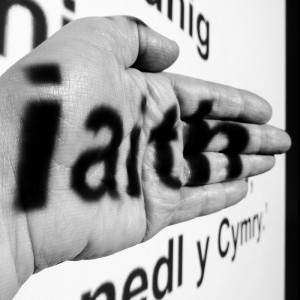 In the late 1930s, the amateur linguist Benjamin Lee Whorf posed the theory that language determines the nature and content of thought. This “Whorfian” hypothesis inspired decades of research in a variety of disciplines, including linguistics, psychology, philosophy, anthropology, and education. To this day, it has not been completely disputed or defended but has continued to intrigue researchers around the world. Many have adopted a weaker form of the hypothesis, namely that language influences how we think rather than determining, in a rigid fashion, the very content of the thoughts.
In the late 1930s, the amateur linguist Benjamin Lee Whorf posed the theory that language determines the nature and content of thought. This “Whorfian” hypothesis inspired decades of research in a variety of disciplines, including linguistics, psychology, philosophy, anthropology, and education. To this day, it has not been completely disputed or defended but has continued to intrigue researchers around the world. Many have adopted a weaker form of the hypothesis, namely that language influences how we think rather than determining, in a rigid fashion, the very content of the thoughts. An ingenious series of experiments conducted a number of years ago showed that when people mimicked the facial expressions associated with happiness, they felt happier – even when they did not know they were moving the “happy muscles” in their face. Researchers have found that smiling itself produces feelings of happiness. How were they kept in the dark? Simple. They were asked to hold a pencil with their teeth. Doing so tends to activate the muscle we use when we smile (the zygomatic major). This muscle lifts the corner of the mouth obliquely upwards and laterally and produces a characteristic smiling expression. Try it now. You will smile. Now, take that pencil and hold it in your lips, pointing it straight out. A different set of muscles are now activated, those that are involved in frowning (these are the ones targeted by Botox treatments). Why this clever ruse? You can’t let subjects in the study know that they are supposed to be feel-ing happy, because that would have unintended consequences on the behavioral rating of interest.
An ingenious series of experiments conducted a number of years ago showed that when people mimicked the facial expressions associated with happiness, they felt happier – even when they did not know they were moving the “happy muscles” in their face. Researchers have found that smiling itself produces feelings of happiness. How were they kept in the dark? Simple. They were asked to hold a pencil with their teeth. Doing so tends to activate the muscle we use when we smile (the zygomatic major). This muscle lifts the corner of the mouth obliquely upwards and laterally and produces a characteristic smiling expression. Try it now. You will smile. Now, take that pencil and hold it in your lips, pointing it straight out. A different set of muscles are now activated, those that are involved in frowning (these are the ones targeted by Botox treatments). Why this clever ruse? You can’t let subjects in the study know that they are supposed to be feel-ing happy, because that would have unintended consequences on the behavioral rating of interest.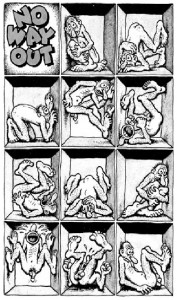 If we want to make the most out of opportunities to flex our gratitude muscles, then we must creatively look for new situations and circumstances in which to feel grateful. Just when I thought I had fully grasped the conceptual basis of gratitude, an article came across my desk describing two “anomalous cases” of gratitude not fitting the usual dynamic of the giving and receiving of goodness between benefactor and beneficiary.
If we want to make the most out of opportunities to flex our gratitude muscles, then we must creatively look for new situations and circumstances in which to feel grateful. Just when I thought I had fully grasped the conceptual basis of gratitude, an article came across my desk describing two “anomalous cases” of gratitude not fitting the usual dynamic of the giving and receiving of goodness between benefactor and beneficiary.